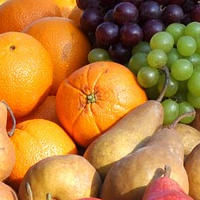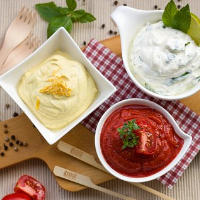9 Foods to Avoid on a Keto Diet

The keto diet is a high-fat, adequate-protein, and carb-restricted diet. Originally designed to treat drug-resistant epilepsy in children, the diet has now grown in popularity as a weight-loss, performance-enhancing, and health-boosting protocol.
The keto diet is based around a macronutrient ratio where 60-75% of calories come from fat, 15-30% from protein, and 5-10% from carbs. This helps you to reach ketosis. Here’s more about it.
In order to stay within this ratio, keto dieters need to eat specific foods but also avoid foods which are high in carbohydrates. But which foods should one steer clear of on this diet? Keep scrolling to find out.
1. Cereal grains
Cereal grains include foods like wheat, barley, millet, rice, and rye, among others. These provide most of their calories from carbohydrates and a smaller amount from fats and protein. Oats, for example, provide 66% of their calories in the form of carbs. Because keto is a low-carb diet, you’ll need to avoid high-carb foods like grains to stay within your carb limit. However, that’s easier said than done since most diets today are based on carbohydrate foods like grains. To make the transition easier, keto dieters substitute cereal grains with nuts and seeds.
2. Pseudocereals
Pseudocereals include quinoa, amaranth, and buckwheat. Although not cereals in the botanical sense, these are still similar to cereal grains from a nutritional standpoint – high in carbohydrates. More specifically, they’re high in starches, which are complex carbohydrates. Although these don’t raise blood glucose levels as quickly as simple carbohydrates, they should still be avoided on a keto diet.
 3. Legumes
3. Legumes
Legumes are higher in protein than cereal grains. However, they’re still high in carbohydrates and need to be avoided on a keto diet. Examples of legumes include beans, chickpeas, lentils, soy, and peas. The only botanical legume you can eat on a keto diet is peanuts. Peanuts resemble nuts from a nutritional standpoint and can serve as a good source of quality protein on a keto diet.
3. Starchy vegetables
Potatoes, sweet potatoes, yams, carrots, parsnips, butternut squash, beets, and plantains are examples of starchy veggies. These typically provide at least 15g of carbohydrates per serving. Acorn squash, for example, has 15g carbohydrates in a cup and sweet potatoes have 30g in the same serving size. On the other hand, a non-starchy vegetable like broccoli provides only 6g in a cup, making it a good option on keto. To know which vegetables you need to avoid and which to eat on a keto diet, it’s best to research keto meals plans or do your own research with the help of diet apps and nutrition databases.
 4. Most fruit
4. Most fruit
Most fruit is high in sugar, a simple type of carbohydrate. Examples of sugary fruits include apples, pears, oranges, kiwi, watermelon, cantaloupe, plums, and many others. One golden delicious apple, for example, provides 30g of carbohydrates, 25g of which are net carbs. This means that one apple can put you over your carb limit. The only fruits that are allowed on a keto diet are avocados as well as moderate amounts of berries, lemon, and lime.
5. Sugars
It goes without saying that you need to avoid sugar on a low-carb diet since sugar is a simple carbohydrate. However, not everyone understands what falls under the forbidden “sugars” category on a keto diet. So, to make it simpler for you, just avoid all sweeteners with calories like table sugar, honey, corn syrup, coconut sugar, agave syrup, rice syrup, and maple syrup. To add sweetness to desserts, keto dieters use non-nutritive sweeteners like stevia, erythritol, and monk fruit.
6. Milk
Most dairy is allowed on a keto diet because it is a good source of both fat and protein. Examples of keto-friendly dairy products include butter, cream, cheese, and yogurt. Milk, however, is not keto-approved because it’s high in a simple sugar called lactose. A cup of milk provides almost 13g of lactose. On the other hand, the same serving of cultured sour cream provides 8g of lactose. Lactose is degraded into lactic acid during milk fermentation or the early stages of ripening.
 7. Some condiments
7. Some condiments
You know you need to avoid sugar and starch on a keto diet, but you may not know that many of your favorite condiments contain these ingredients. Ketchup, for example, may contain sugar and corn syrup. It also contains tomato concentrate, which has more calories than raw tomatoes. Other high-carb condiments you need to avoid include BBQ sauce, black bean sauce, balsamic vinegar, and hoisin sauce.
8. Processed food
You don’t necessarily need to avoid all processed food for the keto diet to work, but it’s best if you try to limit your intake of such food. That’s simply because you want to ensure you’re eating nothing but high-quality and real foods to prevent nutrient deficiencies and side effects on this diet. Processed foods you may want to limit on keto include processed vegetable oils, shortenings, margarine, hot dogs, fake cheeses, deli meats, and others.
9. Some shellfish
Most seafood is perfectly acceptable and even recommended on a keto diet. Seafood is an excellent source of omega-3 fatty acids, essential fatty acids that we need to get more of. It’s also rich in quality protein. Shellfish, however, also contain quite a bit of carbohydrate. A serving of 6 medium-sized oysters, for example, packs as much as 10g of carbohydrates. Mussels, clams, and scallops also have some carbs in them as do squid and octopus.
Summary
The keto diet comes with a list of foods to avoid and foods to eat. By avoiding certain foods on this diet, you’ll keep your carb intake within the recommended limit while leaving plenty of space for foods high in fat and moderate in protein. Some foods, however, need to be avoided because they won’t contribute to good nutrition on this diet and may even prove to be unhealthy. Make sure to stick to this short list of foods to avoid on a keto diet and you’ll be reaping the benefits of ketosis and the keto diet in no time.
You must be logged in to post a comment.